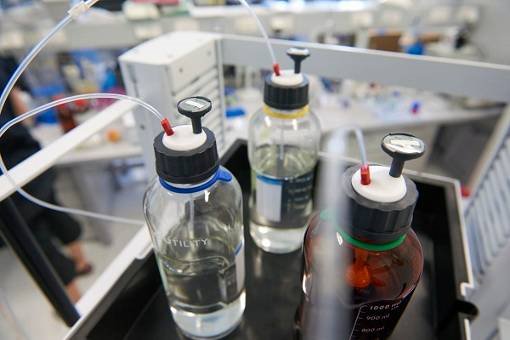HPLC systems make it possible to perform high-resolution, fast separations with ease. A typical system consists of a pump, detector, and autosampler. In this article, we are going to look at how to optimize your HPLC system, looking specifically at troubleshooting HPLC autosamplers.
The autosampler component of a HPLC system is used to increase sample throughput, improve the precision of injections, and allow for unattended operation. Its main components are a needle or syringe, a metering device to measure sample volume, and a sample loop. There is also a valve used to control the hydraulic path of the eluent.
Troubleshooting HPLC autosamplers
As with most pieces of equipment in the lab, sometimes things don't run smoothly and you have to look at ways of troubleshooting HPLC autosamplers. System problems could be due to any, or all, of the following issues:
1. Mechanical problems - to maintain reliable operation, the autosampler must be kept clean and checked for proper adjustment regularly
2. Tray position and identity of samples - there are potentially serious consequences for results from incorrectly identifies samples
3. Sample carryover - demonstrated when an injection of a solvent blank produces a replicated version of the previous sample's chromatogram, just on a smaller scale. Most of the time, it occurs as a result of adsorption of the analyte within the injection component
Common contamination issues
1. Carryover – mostly due to analyte/sample matrix adsorption onto metal or plastic surfaces within the autosampler
- Worn parts, either through damage or a rough surface, are of benefit to carryover as the sample matrix easily attaches to it. For example, needle outer surface versus the inner surface of the needle seat
- It may also come from needlewash solvent, which should be regularly changed
2. System contamination – indicated by broad ghost peaks, is rarely due to autosampler contamination and can indicate late elution of compounds from a previous injection. The broad peaks can be resolved by using more effective sample clean-up protocols
3. Sample contamination – sharp ghost peaks tend to indicate contamination of sample, and can arise from many sources and from various stages in sample preparation. To avoid, you should eliminate sources of contamination from your sample preparation protocol and ensure that you are using clean vials
4. Sample needle – if the needle gets blocked, soak in an appropriate solvent but remember not to sonicate it if the component is welded. (Typically it is hard to clean a blocked needle and the most reliable procedure is to replace it)
5. Vials – to avoid cavitation, don’t fill your vials to the top and ensure that you choose the appropriate glass and septum materials.
- You may need to adjust the injector draw speed, depending on sample viscosity
- It’s also important to remember that volatile solvents/analytes might evaporate once the septum is pierced
- Only use supported vials and vial caps combinations as wrong combinations could lead to issues with vial handling/vials falling off the gripper. For example, low-quality caps can result in blocked needles or needle seats due to coring
Maintenance tips
Ensuring continual maintenance can help with troubleshooting HPLC autosamplers, and should be done at least every 12 months. Components to consider include:
- Needle and needle seat. View them as one functional part and replace in pairs. A damaged needle’s outer surface will damage the new inner of the needle seat, and vice versa
- Loop capillary. As it doesn’t get worn through operation and regularly gets flushed, the loop isn’t a dedicated part of preventive maintenance. However, it should be taken into account when troubleshooting for contamination and leaks
- Injection valve rotor seal. Remember to inspect the inner surface of the stator for any damage, as it could impact on the rotor seal and cause further damage. Mechanical damage to the rotor is typically attributed to undissolved buffer crystals or working with an incompatible pH-range
- Metering device seal (can be maintained every two years)
- Apply sufficient flushing of the complete system before changing method. It’s especially important when working with high salt concentration buffers as undissolved salt crystals damage the mechanical parts in the flowpath
- Remember to check the condensate drain on cooled autosamplers and ensure that the condensate has an unhindered flow into the waste
It’s important to keep on top of any issues that might arise in the autosampler to ensure that you continually optimize your HPLC system. Bookmark this article for help when you’re troubleshooting HPLC autosamplers.
Agilent InfinityLab solutions for high- and ultrahigh-performance liquid chromatography include instruments, columns, and supplies to help your lab achieve highest operational efficiency. For more information, click here.
Keywords: HPLC columns; HPLC; autosampler; vials; degasser, preventive maintenance, valves, pump, vacuum pump

